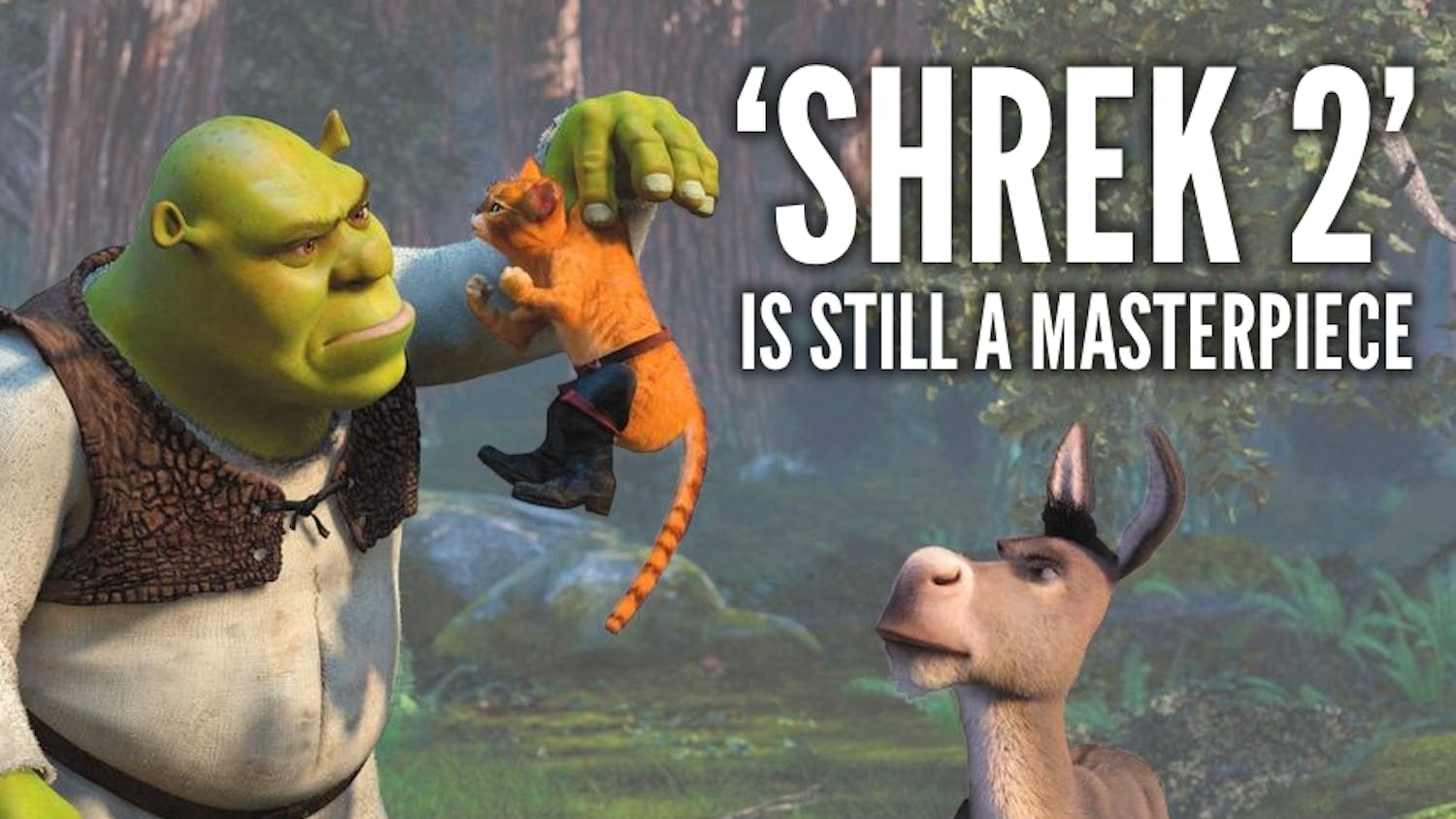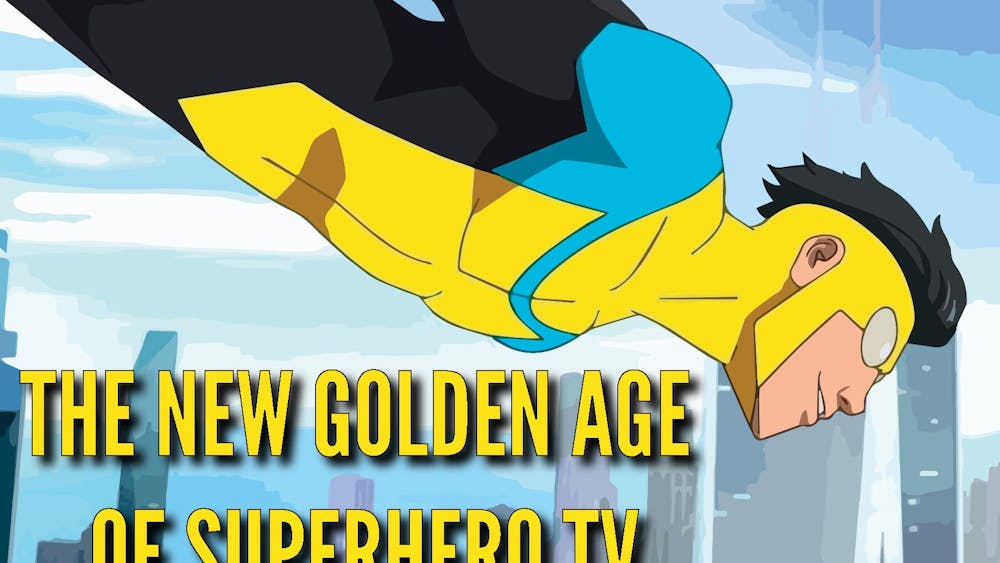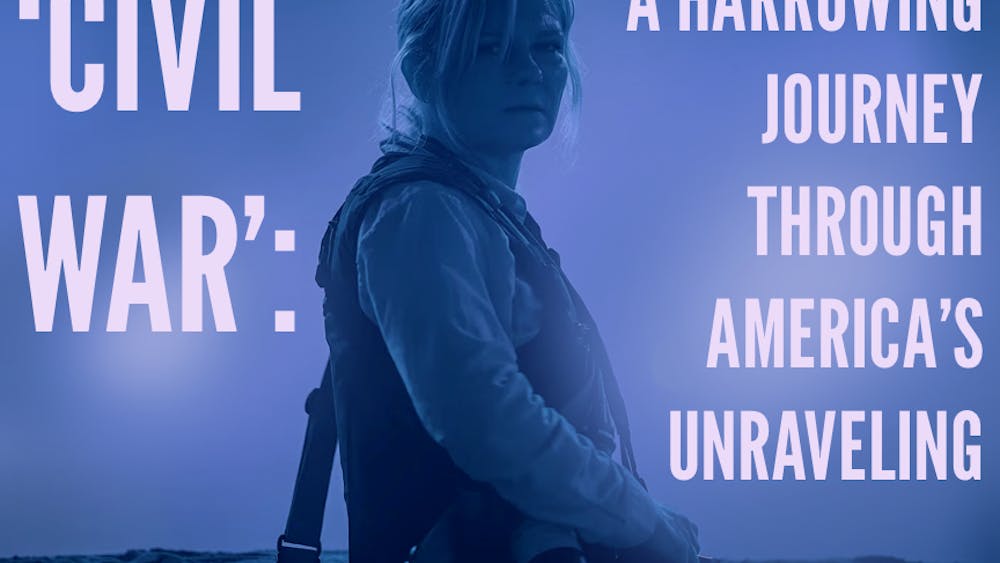
Steven Spielberg knows how to start a film. From the blood-soaked beaches of Normandy in “Saving Private Ryan,” to the hectic, holographic offices of the Pre-Crime Division in “Minority Report,” Spielberg’s films have a rich tradition of opening with spectacular set pieces. Set pieces that are often bigger and noisier than anything seen in a Bond film, yet also more narratively and technically nuanced. In regards to this tradition, his new film, “Bridge of Spies,” is both recognizably Spielbergian and surprisingly fresh.
The film’s opening depicts a non-chase chase. An elderly painter leaves his Brooklyn apartment, easel in tow, and settles on a bench in the purlieu of the Brooklyn Bridge. It turns out painter is merely the guise behind which this man — or, should I say, this spy — operates, as the park bench is the site of a dead drop. Classified documents switch hands, and the painter returns home. Realizing half a dozen men in grey flannel suits are in tail, he meanders through backstreets and subway stations. The opening minutes of “Bridge of Spies” are some of the tensest on screen this year.
The level of technical mastery on display here can only be attributed to a handful of living directors, so it is no surprise Spielberg is at the helm. The element that truly dazzles, however, is Spielberg’s restraint. He allows the scene to take its time; it unfolds at an almost excruciating pace. It’s a strategy beyond the scope of lesser directors, who would either direct the scene with clichéd verve or neuter any semblance of tension in an attempt to capture the contrarian quiet Spielberg does. Of course there are no superfluous camera moves or edits — this is Steven Spielberg, not Michael Bay, after all. But where “Saving Private Ryan” and “Minority Report” opened with a certain loud immediacy, the opening of “Bridge of Spies” is nearly silent, evoking the studied tension of films like “No Country For Old Men” and “There Will Be Blood.” The camera is often handheld, but never disorients the viewer like it did in passages from “Saving Private Ryan.”
This is not to say that “Bridge of Spies” is better than Spielberg’s reigning two best films (it’s not, all hail “Minority Report”). “Minority Report” in particular offered only a taste of its inventiveness in its opening scene. “Bridge of Spies,” on the other hand, fails to fulfill the promise of its opening. In fact, it is not until we reach the eponymous bridge nearly two hours later, in a scene that evokes the climax of “The Bridge on the River Kwai,” that the film even approaches the heights reached by that non-chase chase. Joel and Ethan Coen penned the script, and it seems they’ve picked up a few bad habits from Aaron Sorkin. Too much of the film merely depicts characters conversing (read: preaching) in dark rooms.
And yet, “Bridge of Spies” is a beautiful film. Cinematographer Janusz Kaminski imbues the film with the same gritty texture as “War Horse” and “Lincoln” (two of Spielberg’s other beautiful but simply adequate movies). The lighting is expressive almost to a fault—certain scenes overuse hues a la Douglas Sirk.
As a Cold War era thriller, “Bridge of Spies” addresses themes of identity and duplicity. (Because don’t all non-Bond spy flicks?) A Russian spy, Abel, is captured and persecuted for crimes against the state. Aren’t there Americans doing the exact same thing in Russia? (Where, ironically, Abel is considered a hero.) A lawyer — Tom Hanks in a superb turn as Tom Hanks — provides legal defense for Abel. Hanks’s character is promptly called a traitor … for keeping his oath to uphold the Constitution. Spielberg perfectly captures the tension between our different identities — war hero versus spy, lawyer versus traitor — and our environments with the film’s opening shot. Abel looks in the mirror as he paints a self-portrait. Three versions of the man are on display, each essentially the same, yet slightly different. Looking at this near-perfect visual distillation of the film’s themes, I was immediately reminded of mimesis: the idea that art imitates life. Abel’s portrait literally imitates life, or, more precisely, life’s mirror image. “Bridge of Spies” itself, with its “inspired by true events” script, also imitates life (or at least claims to). More notable, however, is its imitation of other films. In its seriousness, dramatic tone, length, darkness of themes, period setting, and of course, its “inspired by true events” script, “Bridge of Spies” imitates its predecessors in the “prestige picture” (read: Oscar bait) sub-genre.
“The Imitation Game,” “The Theory of Everything,” “American Sniper,” “Selma,” “The Wolf of Wall Street,” “Philomena,” “Dallas Buyers Club,” “Captain Phillips,” “12 Years a Slave,” “Lincoln,” “Zero Dark Thirty,” “Argo” and “Django Unchained.” In the last three years half of the films nominated for the Academy Award for best picture have been based on true stories. (Well, not “Django” … just checking if you are paying attention.) Half of these films are also period pieces. Two of those true-story period pieces, “Argo” and “12 Years a Slave,” won best picture. And, with the exception of “The Wolf of Wall Street,” none of these films are all that great. Can it really be that Hollywood can’t come up with good original stories at a rate greater than history can? Apparently not, as each October ushers in a parade of movies that wear their “inspired by true events” badges with misguided pride. Writers have the ability to create worlds — to be gods — yet they keep imitating that which has already happened.













